
Vintage 1978 Gibson RD Artist Natural
Vintage 1978 Gibson RD Artist in Natural Finish. This is great guitar we hardly ever see these in the finish. This is one of the early long scale ones. These guitars are have the late seventies funky styling and produce killer modern tones. This guitar is constructed from solid maple. It has tons of sustain and heavenly tone. The Moog electronics work well in this guitar. You can get a phase sound and a compressor. This guitar is 100% original including all parts and finish. Great overall guitar and a rare find with the original hardshell case.

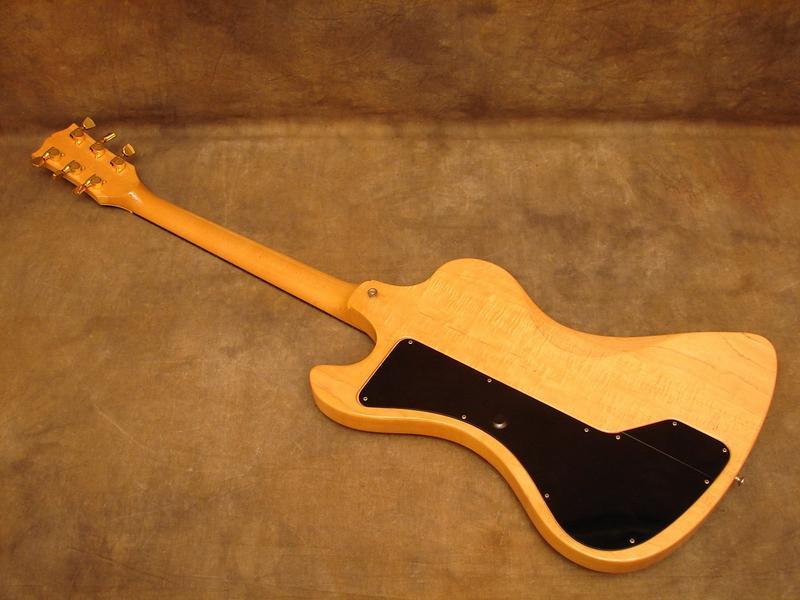

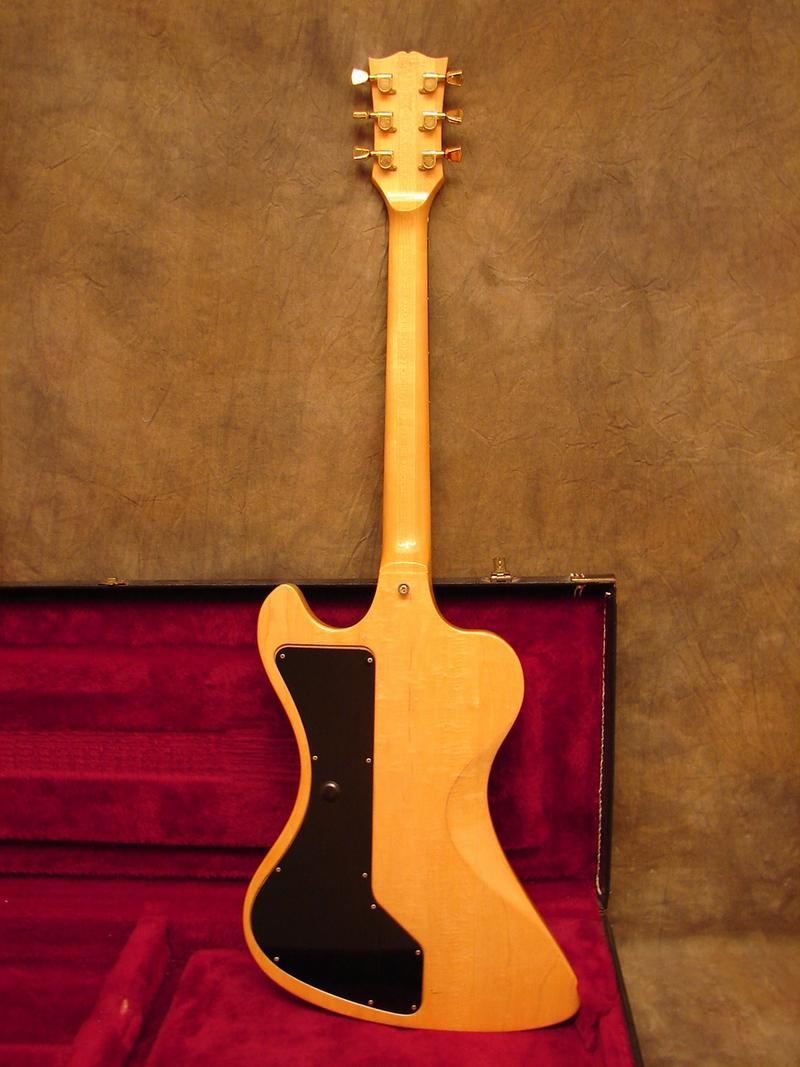
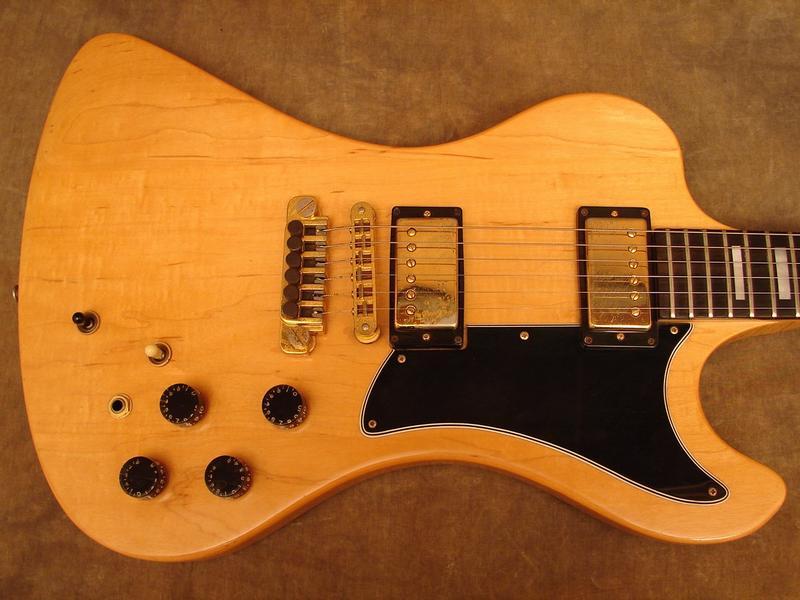
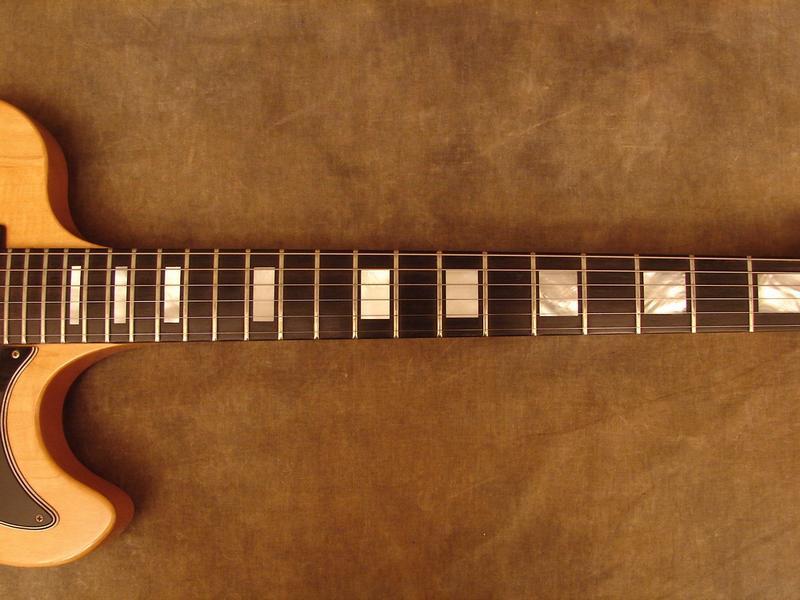
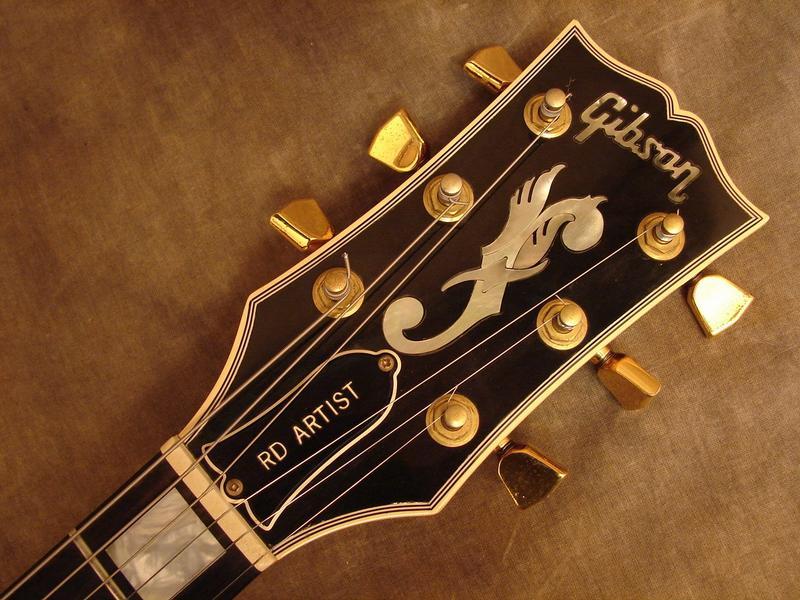
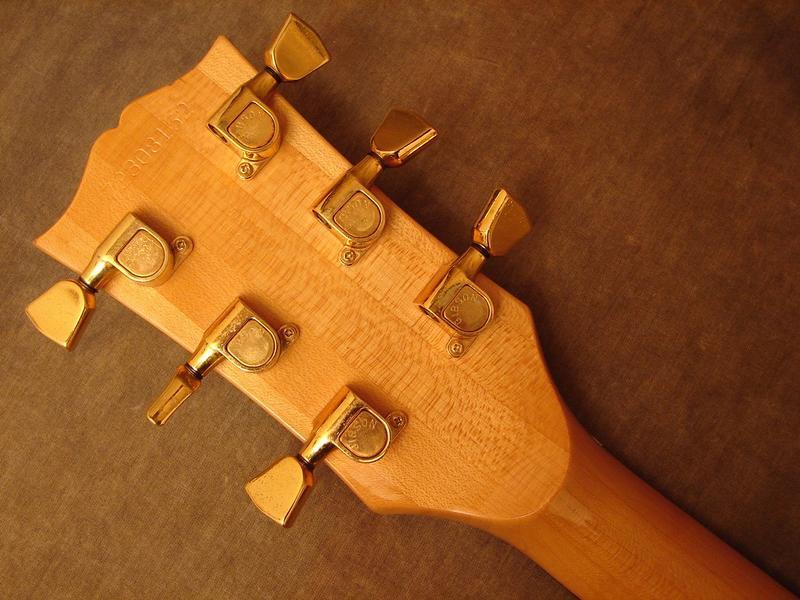
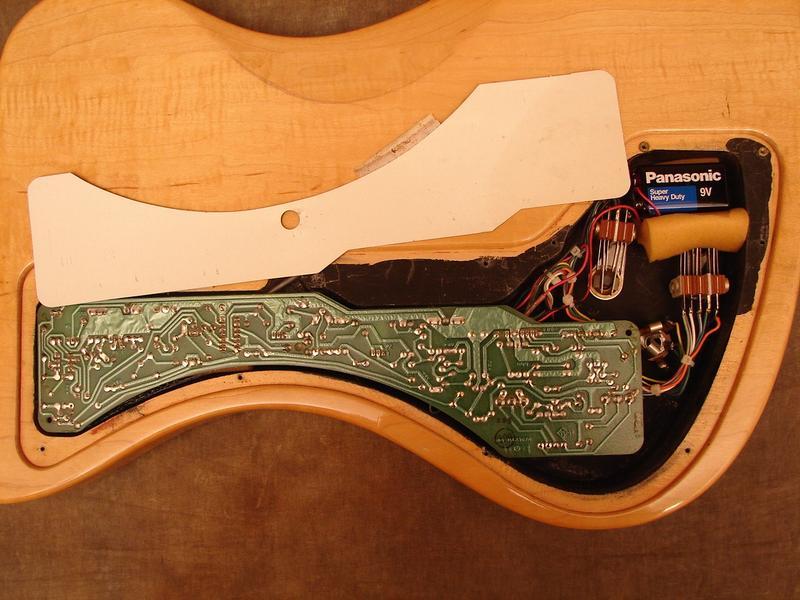

From http://vintageguitars.org.uk/RDartist_2.php
The controls for the RD Artist changed in 1979, and are detailed
below for the RD77
RD77
Upper Front pickup volume control
Lower front is the Bass control
Upper Back pickup volume control
Lower back is the Treble control
Pickup selector switch (white)
Mode selector switch (Black) 3 position
A - Mid-position - "Neutral" - standard, straight ahead active electronics
B - Back position - Activates Expansion/Compression mode. Pickup selector switch then engages front pickup for expansion effects, back pickup for compression or combine the two.
C - Forward position - "Bright" mode.
There are a two other potential adjustments on the Moog board itself, both are factory set, but can be adjusted by the user. The first is the Expander sensitivity adjuster. Early models have a small hole on the back of the guitar, in the control panel cover, just big enough for a flat blade screwdriver to adjust this. The effect of this control is self explanatory, and in reality is quite subtle. Obviously this only effects the expansion mode. Later models had a small rubber plug which could be turned with the same effect. The second board-mounted control is the decay time adjuster. Unlike the expansion sensitivity this can not be adjusted without removing the board itself and is probably best left at the factory setting.The images on the left show these adjusters from the underside of the board. From the assembled board, all you see is a small hole. The image on the right shows the location of the sensitivity exander adjustment on the Moog circuit board. When covered, the plastic cover has a hole or rubber knob in the same place
Gibson RD
The Gibson RD series solid body electric guitars were launched in 1977 as a
complementary range to Gibson's existing guitars. They were designed to be brighter
sounding than the existing models (such as the Gibson Les Paul or Gibson SG)
and as such were longer scale (25 1/2" as opposed to the more usual 24
3/4"), maple-bodied, and with state-of-the-art pre-amplified (active) electronics.
At the time Gibson was owned by Norlin who also owned Moog Music. The active
electronics were designed by Bob Moog, shortly before he left his own company.
RD Models
RD Artist 1977-82 The best known RD, the Artist featured active circuitry with
switchable bright mode, compression and expansion. No passive mode. The electronics
consisted of a 9v battery powering a circuit board the length of the body, accessible
from the back cover. Also available as a bass. The neck scale was shortened
in 1979 to 24 3/4", a return to the standard Gibson scale used on other
solid bodied guitars. The post 79 instruments are less desirable today than
the original '77 Artist, which has become something of a modern classic.
RD Custom 1977-79 The Custom featured active circuitry with a switchable bright
mode. The electronics consisted of a 9v battery powering a circuit board smaller
than the artists, but still of significant size, accessible from the back cover.
No passive mode.
RD Standard 1977-79/2007 The Standard was passive only, with none of the circuitry
of the other two models. Also available as a bass. The standard was reissued
in Silverburst only, in a limited edition of just 400 guitars, as Gibson's 48th
Guitar of the Week series of 2007.
Notable RD players
Main article: List of Gibson players
Jimmy Page of Led Zeppelin used his 1977 RD Artist model to perform the song
Misty Mountain Hop at the band's August 11th appearance at Knebworth.
Steve Khan used a Gibson RD Artist on his The Blue Man album (1978 CBS Records),
crediting his thanks to Musitronics and Pat Alworth, Gary Aumaugher and Buck
Munger of Gibson Guitars for their RD Artist Guitar.
British classical guitarist John Williams used a Gibson RD Artist on the very
first 'SKY' album.
Mikey Dees (Fitz Of Depression) Mikey Uses as his main Guitars, the Gibson RD
Custom, and has been known to play an SG from time to time in the studio. He
used both the RD and SG for the Foo Fighters track "How I Miss You",
from the "Big Me" E.P. on which he was a guest player.
Tim Kasher of the Omaha, Nebraska and Saddle Creek Records band Cursive has
been using one recently.
Dav Byrne of Agonhymn plays a reissued 2007 model RD Standard.
Pavlo Haikalis of A Texas Funeral, Uses a 1977 RD Standard (Customized with
active EMGs, double boosted 2x9 volt battery, and Jokers card), and a 1978 RD
Custom on their first release "Views and platitudes of a dreary mind".
Pavlo from ATF Playing Gibson RD standard
The RD line of Guitars was unveiled in 1977. It consisted of three six-string
guitar models (RD artist, RD custom and RD standard) and two basses (RD artist
and RD standard). RD stands for research and development.... and this range
of instruments certainly was a technological leap forward for the Gibson company.
At the centre of this innovation was the RD Artist guitar and bass. Not only
were they Gibsons first active instruments, but they were also equipped with
Moog (another Norlin company) expansion/compression circuitry.
Throughout the 70s Gibson experimented with guitars that were completely different
from its older mahogany solid-bodies. Taking ques from other manufacturers,
and coming up with ideas of their own. Newer models had been made from maple
(L5-S, L-6S) with a bolt-on neck (Marauder and S-1) and now were being taken
one step further still with the RD series; aswell as active electronics, the
guitars were Gibsons first extra long scale instrument (25 1/2" as opposed
to the usual 24 3/4"). According to early literature, were designed "with
size, shape, and density of materials, chosen for their brightness, brilliance,
sustain and comfort"
The Gibson Product development director at the time was Bruce Bolen. in this
1978 he explains the vision behind the RD artist.
One of the particular musical qualities that I personally was looking for in
one of the models, was a similar effect to that of a steel player - this being
the reduction of the intitial attack and the swell of the note after the initial
attack had been made. A steel player of course uses a volume pedal to accomplish
this but it was still something missing. Bob designed a special circuit that
would achieve this as well as an expansion circuit unlike any other that had
been designed to date.